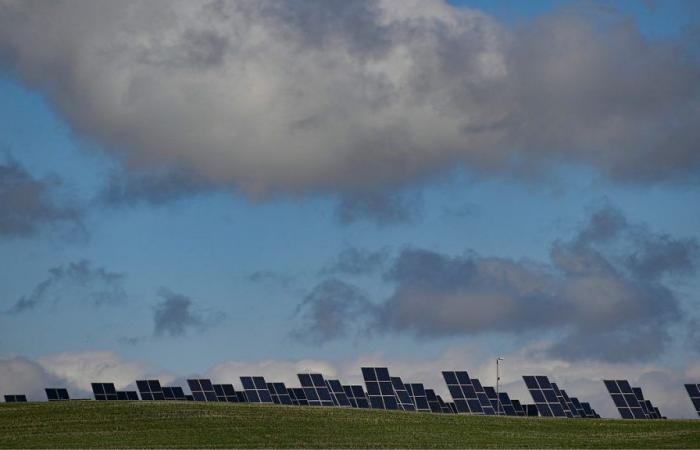Increases in wind and solar power, combined with a sharp decline in fossil fuels, have propelled renewables into the lead pack.
Renewable energy was the main source of electricity in the EU in 2023, according to preliminary data from Eurostat.
Renewable energy accounted for 44.7% of total electricity generation, generating 1.21 million gigawatt hours (GWh), an increase of 12.4% compared to 2022. The rapid installation of new solar projects and wind farms across the Union has helped push this figure up.
Electricity produced from fossil fuels fell by 19.7%, contributing 0.88 GWh, or 32.5% of the EU’s electricity.
Natural gas supply fell by 7.4% compared to 2022, the lowest level since 1995. The largest drops in natural gas consumption were observed in Portugal, Austria and the Czech Republic.
The supply of oil and petroleum products fell by 1.5%. The total supply of these fossil fuels has slowly declined over the years, with the slight exception of 2022 during the post-pandemic recovery.
Even larger declines were observed last year for coal. Lignite, commonly used for electricity generation, and hard coal, used for heating and steelmaking, reached their lowest levels since records began. This follows a general decline in their use across the European Union over many years.
Why this sudden drop in fossil fuels?
In 2022, the energy crisis and problems faced by hydroelectric and nuclear power plants due to a hot and dry summer have combined to create a dramatic situation for the EU’s electricity supply. In response to these problems, the Union presented its RePowerEU planwhich aims to save energy, diversify sources of supply and promote the transition to clean energy.
According to preliminary data from Eurostat, decisions taken in 2022 appear to have had a “significant positive impact” on the EU’s energy supply. The Union has seen a remarkable increase in renewable energy and a sharp decline in fossil fuels, particularly natural gas and coal.
Which renewable energy sources have made the most progress?
Last year was a record year for solar energy worldwide, and Europe was no exception. Solar energy is now one of the cheapest forms of electricity in the majority of countries, and prices will reach a record high in 2023.
A study published last year by the University of Exeter and University College London predicts that‘solar energy will reach a “irreversible tipping point” and will become the world’s leading source of energy by 2050.
Preliminary data from Eurostat shows that the biggest increase in renewable energy in the EU last year came from solar power. Compared to 2022, it produced 18.9% more electricity in the EU in 2023. Furthermore, in the five years from 2018 to 2023, photovoltaic energy production increased by 126.3 %.
Wind power installation also broke records in 2023. In Europe, offshore projects and strong growth in the Netherlands have increased capacity.
In the EU, Eurostat indicates that wind electricity production increased by 13.4% compared to 2022Overall, wind energy contributed more to electricity production in the EU in 2023 than natural gas.
Hydroelectric power was also more important in 2023 than in 2022, but due to droughts and extreme heat across Europe that limited capacity, 2022 is considered an outlier year.
All of these developments have made renewable energies the leading source of electricity in the EU in 2023.






